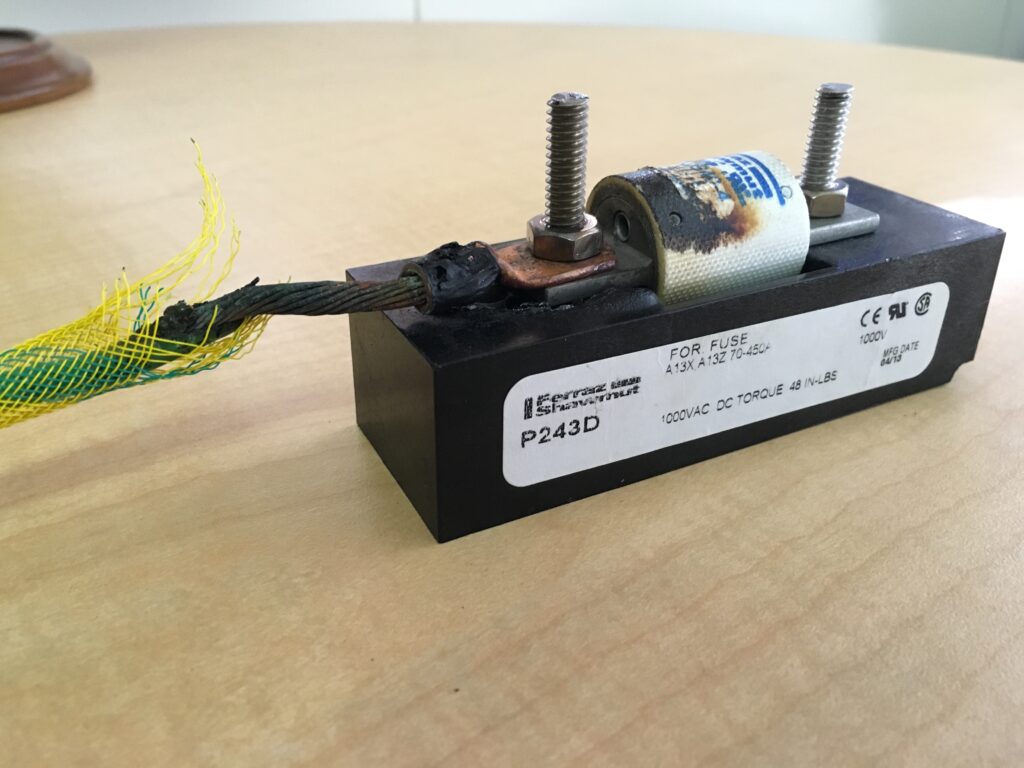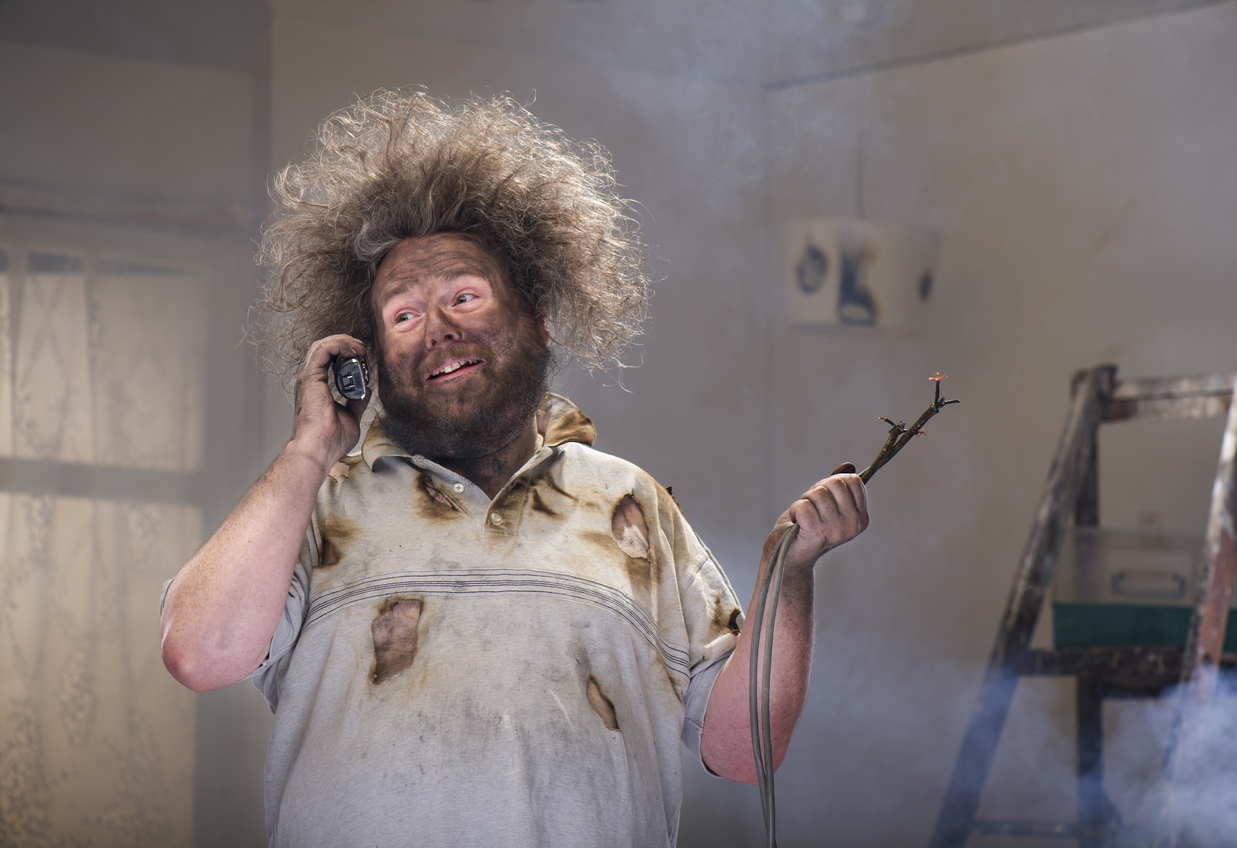TL;DR
A frequent plea for help on social media can go something like this: “Help! My car won’t charge! What should I do?” To which my response is something like, “You haven’t given me enough information to help you diagnose the problem.”
Keep reading if you would like to be able to troubleshoot EV charging problems like a pro.
The Nitty Gritty Details of Troubleshooting EV Charging Problems
Before beginning, I need to be pedantic about terms. While I have written about this in the past, a quick refresher can’t hurt. That box with the cable and plug that’s bolted to many EV owners’ walls is not a charger – it is an EVSE. An Electric Vehicle Supply Equipment (EVSE) is little more than a smart switch. What any electrical engineer would call a charger is actually in the car. The charger (in the car) is the device that takes Alternating Current (AC) and converts it to Direct Current (DC) at the proper voltage required to charge your car’s battery.
Unless, that is, you’re charging from a DC Fast Charger (DCFC). In that case, the charger is a larger refrigerator-sized box that is typically enclosed in a metal container, somewhere near the dispenser that you’ve plugged your car into; the charger in the car is bypassed.
So when I say “EVSE”, I mean the thing in your garage. When I say “DCFC”, I mean the place you drive your car to that is (typically) part of a large network like Tesla’s Supercharger network, Electrify America, ChargePoint, or EVgo.
With that out of the way, a good place to start when troubleshooting charging issues would be first to understand that any EV will use different onboard equipment if charging using an EVSE versus a DCFC.
Every EV has onboard hardware that serves the function of a “charger.” When you plug your car into an EVSE, that onboard charger changes the AC to DC, as mentioned above. The EV’s onboard charger is bypassed when the vehicle is plugged into a DCFC. So if your car doesn’t charge at home using a Level 2 (or 1) EVSE, it is quite possible it will accept a charge using a DCFC. The reverse (charges using an EVSE, but not using a DCFC) is much less likely but still possible.
That’s step one. If your car isn’t charging using a Level 2 (or 1) EVSE, try charging it at a DCFC. Look for one near your home using Plugshare. If your car then charges at a DCFC, you’ve ruled out a few EV charging issues and can focus on the remaining ones. We’ll get to those cases in a bit.
If your car charges on an EVSE (L1 or L2) and doesn’t charge at a DCFC, make sure you try a few different DCFCs. It is almost certainly an issue with the DCFC and/or the communication protocols between the DCFC and your car. Otherwise, it’s a trip to the dealer for you.
But what if you have the opposite problem – you can charge on a DCFC but not at home with your EVSE?
Three basic scenarios need to be considered to narrow down where the problem is. Let’s dive right in.
Scenario 1—It’s the Car
To prove beyond a reasonable doubt that the charging issue is your car, you’ll need to try charging on another EVSE that is known to work. Find one on Plugshare or at your car’s dealership. An alternative to either of those options is to join a social media group for your car’s model (or in your area) and see if there is someone nearby with an EVSE that is known to be working that you can try.
If your car charges on another EVSE but not the one in your garage, you’ll need to consider Scenarios 2 and 3, as the problem (probably) isn’t your car.
Scenario 2—It’s the EVSE
To prove beyond a reasonable doubt that the charging issue is your EVSE, you’ll need to try charging another EV on your EVSE. That’s a little bit harder, as you can’t go on Plugshare and order another EV to come to your house. This is where making EV friends on social media can really help. Unless, that is, your next-door neighbor happens to have an EV, and you can invite them to come get a few free electrons at your house.
Difficulty aside, it may be worth the effort as the alternative is taking your car to the dealer, where you just may end up with the dreaded “it’s not me, it’s you” diagnosis.
If your EVSE charges another EV, you can say with reasonable assurance that the problem is, in fact, your car, and it’s time to bring that diagnosis to the dealer.
However, if your EVSE does not charge another EV, you can not (yet) say with reasonable assurance that the problem is actually your EVSE because of Scenario 3: your EVSE installation.
Scenario 3—It’s the EVSE Installation
Here is a fact of life: entropy happens. Even if you have charged your EV with the same EVSE a hundred times, it is possible that on the one hundred and first charge, something upstream of the EVSE degraded to the point where it appears that the EVSE no longer works, when in fact, the problem isn’t the EVSE – it’s the installation.

This fuse block is a classic example of how a poor connection can initially work and lead to disaster a few months later. While it isn’t from an EVSE installation, it still shows how an improperly torqued connection leads to gradual loosening by increased resistance, increased heat, not-so-gradual loosening, and ultimately failure. This came from my Mazda Miata EV conversion. I pulled into my garage and smelled something burning, opened the hood, and this wire was glowing red. The wire blackened from oxidation due to increased temperatures and resulted in a poor electrical connection – this circuit is never going to conduct electricity again and needs to be replaced. And this time, it will be properly torqued! Image Credit: John Higham.
It could be something as simple as the circuit breaker opening, but if that were the case, that would be a symptom of a bigger problem that needs addressing.
Troubleshooting a sub-standard installation is pretty straightforward if you know what you’re doing. If not, and you’ve exhausted all your other options in trying to troubleshoot your charging problem, it might be time to hire an electrician. That said, reviewing some ways an installation can go bad is instructive.
If the problem is a circuit breaker tripping, and it repeats itself, the wiring is either shorting the circuit or the car is drawing more current than allowed by the circuit. Either case is going to require an electrician to correct it. Be sure to have the information about the maximum current the car and EVSE will draw so the electrician can remedy the situation. Remember, the car controls the current up to the maximum the EVSE is designed to accommodate.
The other way an installation can go bad is when the circuit goes open. This means that one of the wires is no longer connected. Typically this will happen when a connection isn’t torqued properly (think of a loose nut). Initially, this “loose connection” works well enough, and to the naked eye, it looks fine. But because it is a bit loose, the resistance is higher than the rest of the circuit. This creates heat in that tiny little area; heat makes metal expand. When the car stops charging, the current goes to zero, and the hot metal cools and contracts. This is repeated a few hundred times, and before you know it, the expand/contract cycle has made the connection very loose and the increased resistance will now make that connection hot enough to glow red.
When this happens, insulation burns, wires oxidize, and —assuming no outright flame has sparked to life— the net result will eventually be a connection so loose that there is no longer an electrical connection at all.
If you are handy with tools, you may decide to open up the junction box or electrical panel just to see if any wires look burnt. If there is any burnt smell or brown wire insulation, it’s time to call an electrician.
Once you can rule out an inferior installation and determine your EVSE will charge another car, it is time to conclude there is something wrong with the car.
In Summary
If you can’t charge on an EVSE, the first thing to do is verify if you can charge at all. Try another EVSE and also a DCFC. Once you determine that your car will charge at a DCFC and another EVSE, then you can focus on your EVSE or a latent defect in your EVSE installation to locate your EV charging issues.
Once you’ve determined the EVSE and its installation are not the problem, then you can move forward with higher confidence that the problem is, in fact, the car.








0 Comments